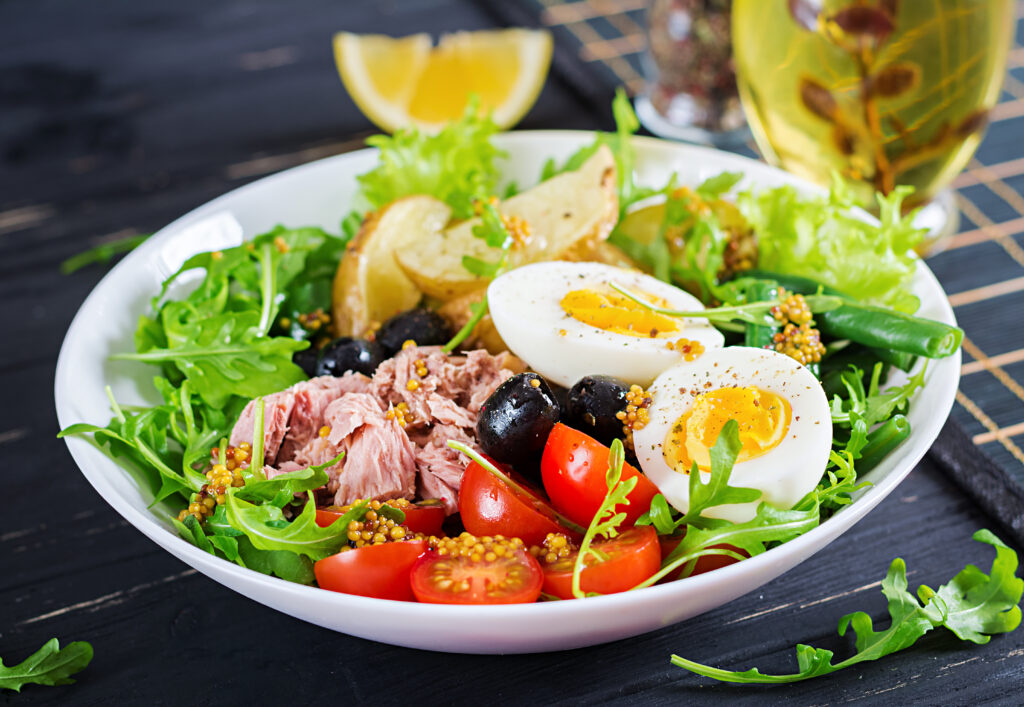
The Whole30 diet is a 30-day nutrition programme designed to eliminate certain food groups that may have a negative impact on your health. Founded by Melissa Hartwig Urban and Dallas Hartwig in 2009, Whole30 is often referred to as a “reset” for your body, intended to help you identify foods that might be causing health issues or unhealthy cravings.
The Whole30 Programme Explained
The Whole30 programme is based on the principle of completely eliminating specific food groups from your diet for 30 days. After this elimination phase, foods are reintroduced one at a time to observe their effects on your body and overall health. This approach is meant to help identify potential food sensitivities and promote healthier eating habits.
What to Eat on Whole30
The Whole30 diet emphasizes whole, unprocessed foods. Here’s a detailed list of what you can eat:
1. Meat, Seafood, and Eggs:
– Beef, pork, lamb, poultry
– Fish and shellfish
– Eggs (pasture-raised or free-range are preferred)
2. Vegetables:
– Leafy greens (spinach, kale, Swiss chard)
– Cruciferous vegetables (broccoli, cauliflower, Brussels sprouts)
– Root vegetables (carrots, sweet potatoes, beets)
– Squash, zucchini, bell peppers, etc.
3. Fruits:
– Berries (strawberries, blueberries, raspberries)
– Citrus fruits (oranges, lemons, grapefruits)
– Apples, pears, bananas, etc.
4. Healthy Fats:
– Avocado and avocado oil
– Coconut oil, coconut milk, and coconut flakes
– Olive oil and olives
– Nuts and seeds (except peanuts)
5. Herbs, Spices, and Seasonings:
– Fresh and dried herbs (basil, thyme, rosemary)
– Spices (cinnamon, turmeric, cumin)
– Salt and pepper
6. Beverages:
– Water (still or sparkling)
– Herbal teas (without added sweeteners)
– Black coffee
What to Avoid on Whole30
Whole30 has a strict list of foods and ingredients to avoid:
1. Added Sugars and Artificial Sweeteners:
– Refined sugar, honey, maple syrup, agave nectar
– Artificial sweeteners (aspartame, sucralose, stevia)
2. Alcohol:
– All forms of alcohol, including cooking wine
3. Grains:
– Wheat, rye, barley, oats, corn, rice, millet, quinoa, etc.
4. Legumes:
– Beans (black beans, chickpeas, lentils)
– Peanuts and peanut butter
– Soy products (tofu, soy sauce, edamame)
5. Dairy:
– Cow, goat, and sheep milk
– Cheese, yogurt, kefir, etc.
6. Carrageenan, MSG, and Sulphites:
– Common additives and preservatives found in processed foods
7. Baked Goods, Junk Foods, and Treats:
– Cookies, cakes, chips, and similar items, even if made with Whole30-compliant ingredients
Advantages of the Whole30 Diet
1. Identification of Food Sensitivities:
– Digestive Issues: Many people suffer from digestive problems like bloating, gas, and stomach pain without realizing that specific foods might be the culprits. By eliminating common irritants and then reintroducing them one by one, participants can pinpoint which foods cause their symptoms.
– Skin Problems: Conditions such as acne, eczema, and psoriasis can sometimes be linked to diet. Identifying problematic foods can help improve skin health.
– Other Health Concerns: Food sensitivities can manifest in various ways, including headaches, joint pain, and fatigue. The Whole30 program helps individuals recognize these links.
2. Improved Eating Habits:
– Whole, Nutrient-Dense Foods: The diet emphasizes eating foods that are minimally processed, rich in vitamins, minerals, and other nutrients. This can lead to better overall health.
– Avoidance of Processed Foods: By cutting out junk foods and processed items, participants often reduce their intake of unhealthy fats, sugars, and additives, leading to a more balanced and wholesome diet.
3. Reduced Inflammation:
– Autoimmune Diseases: For those with autoimmune conditions, chronic inflammation can be a significant issue. The Whole30 diet eliminates foods that may exacerbate inflammation, such as dairy, grains, and legumes, potentially leading to symptom improvement.
– General Inflammation: Even for those without autoimmune diseases, reducing inflammation can contribute to overall health, reducing the risk of chronic diseases like heart disease and diabetes.
4. Weight Loss:
– High-Calorie, Low-Nutrient Foods: The elimination of sugary, processed foods and refined carbohydrates often results in a lower calorie intake and better satiety from nutrient-dense foods, leading to natural weight loss.
– Improved Metabolism: Whole, unprocessed foods can help improve metabolic function, further aiding in weight management.
5. Improved Mental Clarity and Energy Levels:
– Mental Clarity: Many participants report a clearer mind, better focus, and enhanced cognitive function, likely due to the elimination of foods that can cause blood sugar spikes and crashes.
– Sustained Energy: Without the highs and lows caused by sugar and refined carbs, individuals often experience more stable energy levels throughout the day.
Disadvantages of the Whole30 Diet
1. Restrictiveness:
– Challenging Adherence: The strict rules and the elimination of many common foods can be tough for participants to follow, especially if they are accustomed to a more varied diet. This can lead to feelings of deprivation and frustration.
2. Social Limitations:
– Eating Out: Dining out can become a challenge due to the need to avoid non-compliant ingredients, making social gatherings and restaurant meals difficult to navigate.
– Social Events: Social occasions often revolve around food, and the dietary restrictions can make it hard to partake in communal meals, potentially leading to feelings of isolation.
3. Potential Nutrient Deficiencies:
– Eliminated Food Groups: By cutting out entire food groups such as grains, legumes, and dairy, there is a risk of missing out on important nutrients like fibre, calcium, and certain vitamins and minerals. Careful planning is required to ensure a balanced intake of all necessary nutrients.
4. Temporary Results:
– Short-Term Benefits: The improvements seen during the 30-day period may not be sustainable if old eating habits are resumed afterward. Maintaining the benefits often requires adopting a long-term change in eating habits, which can be challenging for many people.
Overall, while the Whole30 diet offers significant benefits, particularly in identifying food sensitivities and promoting healthier eating habits, it requires commitment and careful planning to avoid potential downsides.
Sample Meals on Whole30
Breakfast:
– Scrambled Eggs with Spinach and Sweet Potato Hash:
– Scramble eggs with fresh spinach, and serve with a side of sweet potato hash (diced sweet potatoes cooked in olive oil with onions and bell peppers).
Lunch:
– Grilled Chicken Salad:
– Grilled chicken breast served over a bed of mixed greens with cherry tomatoes, cucumbers, avocado, and a dressing made from olive oil and lemon juice.
Dinner:
– Salmon with Roasted Vegetables:
– Baked salmon fillet with a side of roasted Brussels sprouts, carrots, and cauliflower, drizzled with olive oil and seasoned with herbs.
Snacks:
– Apple Slices with Almond Butter:
– Fresh apple slices dipped in compliant almond butter.
– Veggie Sticks with Guacamole:
– Carrot and celery sticks served with homemade guacamole.
The Whole30 diet is a powerful tool for those looking to reset their eating habits, identify food sensitivities, and improve their overall health. While it can be challenging due to its restrictiveness, the benefits of increased energy, mental clarity, and potential weight loss make it a worthwhile endeavour for many. As with any diet, it’s important to consider your personal health needs and consult with a healthcare professional before starting the programme.










